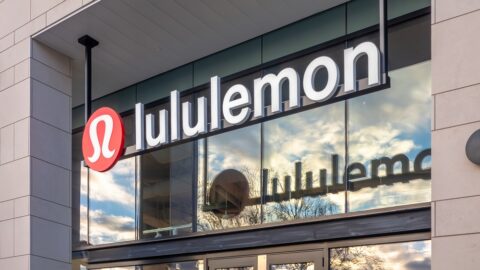Following is Part 1 of the Retail TouchPoints series, titled: Next-Generation Social Media. This section discusses the rise of Pinterest and Instagram, as well as consumer behaviors on these sites. Part 2, which spotlights retailer success stories and best practices, will appear in the June 18 newsletter.
Online and mobile commerce are delivering a growing percentage of retail sales. In tandem, digital communication channels, especially social media, are playing a larger role in shoppers’ product research and purchase consideration processes.
Shopping is an innately social behavior. Until recently, most consumers sought peer approval via face-to-face communication and visited brick-and-mortar stores with friends and family to verify potential purchases.
But today, shoppers instantly can connect with friends, family and even fellow brand fans, to garner feedback and receive detailed insights on potential purchases. Tapping into popular social networks such as Facebook and Twitter , consumers spend a substantial portion of their online time participating in social media communications, according to Nielsen research.
The Rise Of Pinterest And Instagram
However, image-focused sites such as Pinterest and Instagram are starting to capture consumers’ eyes and attention. U.S. desktop users spent approximately 1.3 billion minutes on Pinterest in 2012, according to the Nielsen social report. In addition, consumers spent 721 million minutes on the mobile web site, and 120 million minutes on the Pinterest app.
Since the inception of Pinterest in 2010, it has garnered 48.7 million users worldwide, according to comScore. In addition, comScore reported that the social network received 53 million unique visitors in March 2013, nearly double the rate of March 2012, as noted in a Forbes article.
Instagram, which also entered the social media universe in 2010, is experiencing similar explosive growth: 40 million photos are published to Instagram daily, receiving 8,500 likes and 1,000 comments per second, according to the company web site. Nearly 100 million active users are visiting the social network on a monthly basis.
Consumers are responding strongly to Pinterest and Instagram because these social networks are more focused on inspiration and discovery than Facebook and Twitter, according to Adam Pressman, Principal in the A.T. Kearney retail practice.
“We’ve learned that customers are using Pinterest and Instagram in a manner that is significantly different than how they’re using Facebook and Twitter,” Pressman said in an interview with Retail TouchPoints. “Consumers are actually seeking something and want to discover new products and ideas through these sites.”
Pinterest and Instagram focus more on peer-to-peer interactions and lifestyle content, versus static brand and product information, according to Apu Gupta, CEO of Curalate, a social media analytics company that focuses on Pinterest and Instagram.
“These visual social networks are so impactful because they mostly consist of things,” Gupta said. “With Pinterest, a retailer can see that people are pinning a specific handbag, for example, which shows they really are responding to the brand and products.”
Image-Focused Social Networks Present New Engagement Opportunities
New business opportunities around Pinterest and Instagram focus on the ability to put a brand at the center of consumer interactions and photos being published, according to Joel Alden, who is a Partner in the A.T. Kearney retail practice.
“Pinterest and Instagram present a tremendous opportunity that hasn’t been leveraged before,” Alden said. “Since these new social networks are more product-focused, retailers have the chance to put their product and brand at the center of consumer discussions and interactions.”
There also is a significant commerce opportunity for retailers using Pinterest because it presents the clearest link between social media and an e-Commerce site, according to Gupta. He added that this seamless path to purchase is the key reason why Pinterest will become more popular among retailers in the coming year.
“Brands have a tremendous opportunity to harness the discovery element of Pinterest,” Gupta said. “All they have to do is anchor a link to an image, and if consumers click that image, they become a warm lead. Once consumers are on the e-Commerce site, there is a greater chance that they will be motivated to browse more extensively.”
In fact, among the leading social sites, Pinterest shoppers spend significantly more per checkout versus non-Pinterest users, averaging between $140 to $180 per order, according to research from RichRelevance. The site is far more profitable versus Facebook and Twitter, which garner $80 and $60 in orders, respectively.
C. Wonder uses Pinterest to share new products and outfit recommendations, as well as more lifestyle-focused images. For a recent Mother’s Day contest, C. Wonder turned to Pinterest to drive customer social engagement and shares. To participate in the pin-to-win contest, consumers simply selected a monogram letter of their choosing, submitted their email address, and pinned personalized products touting their monogram on the site.
“The beauty of the program was that it was super simple,” said Michael Chao, Director of Social and Mobile Engagement for C. Wonder. “It didn’t require participants to create a unique pin board, it was personalized, and it was fun. We saw hundreds of images out on Pinterest that highlighted our monogram products, a key part of the product portfolio. In addition, we saw brand impressions in the hundreds of thousands.”
Instagram, however, is more effective as a vehicle to drive advocacy and engagement. The site benefits brands by allowing them to provide consumers with a “behind-the-scenes” look at day-to-day operations, VIP events and other happenings. The social network also is being used as a new channel to hold contests and giveaways, as well as gather user-generated content.
Johnny Cupcakes, a clothing and accessories retailer for men, women and children, taps Instagram to encourage fans and followers to interact directly with the brand. As part of a recent web site design, Johnny Cupcakes opened the opportunity for customers to become product models, according to Lucas Dunn, Business Director of Johnny Cupcakes.
“Through Instagram, customers can post photos of themselves wearing a Johnny Cupcakes product with that product’s pertaining hash tag,” Dunn said in a recent interview with Retail TouchPoints. “Their photo then immediately appears on the product page.”
As a growing company, Johnny Cupcakes sees Instagram and other social networks as “portals into the Johnny Cupcakes brand, its people and its owner, Johnny Earle,” Dunn explained. “The content of these channels isn’t overly structured or defined, but rather tends to focus on the personality behind the brand.”
Harnessing The Power Of The Crowd
Retailers also can drive consumer-to-consumer conversations and overall engagement by embracing crowdsourcing and community tools. With social crowdsourcing, retailers can identify brand fans and advocates, and in turn, leverage these consumers to help fellow shoppers make decisions and drive purchases.
For example, Sephora partnered with Lithium, a provider of social community solutions, to create a digital focus group within the e-Commerce site. Called “Beauty Talk,” this digital outlet allows consumers to connect with each other, ask questions and offer advice, according to Katy Keim, CMO of Lithium.
“Retailers can really benefit from tapping into the power of the crowd,” Keim said. “There is a great amount of overall expertise and value that can be generated in social communities. And since these consumers already are on the e-Commerce site, they’re only seconds away from spending.”
Overall, “Beauty Talk” community members spend approximately 33 hours per month connecting through the digital group, Keim explained. In addition, these consumers spend 2.5 times more money on products than non-community members.
Social media significantly is disrupting how retailers connect with consumers, Keim explained. Rather than pushing consumers to purchase, social is enabling merchants to pull customers in to engage. “Organizations are painfully aware that they need to change the dynamic, but it requires a real behavioral mind shift.”
Part 2 of the Next-Generation Social Media feature will appear in the June 18 newsletter.












